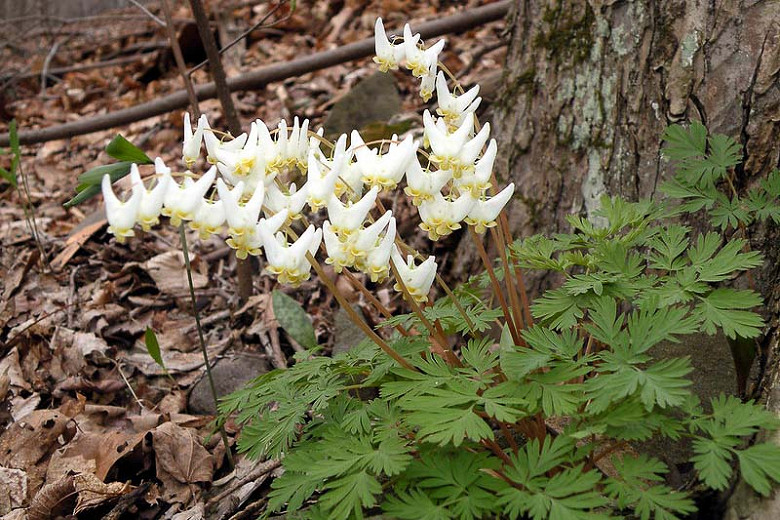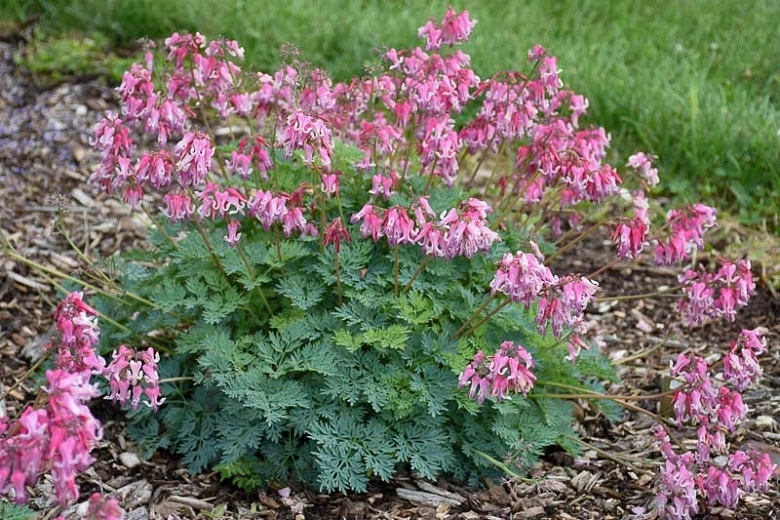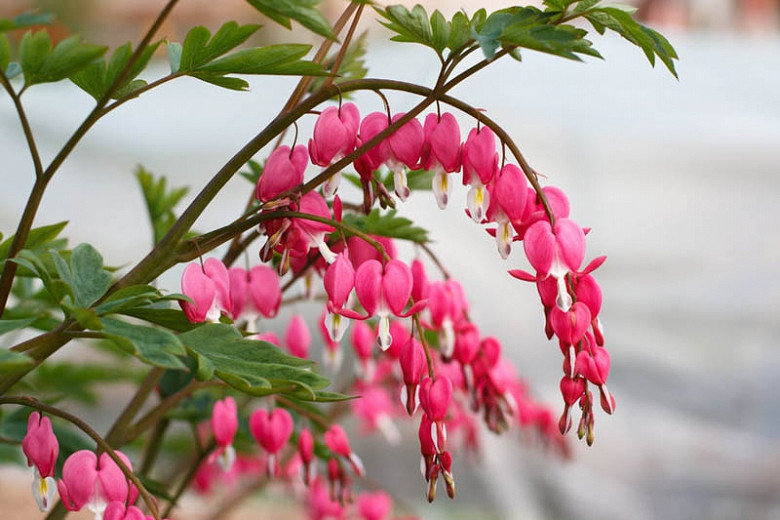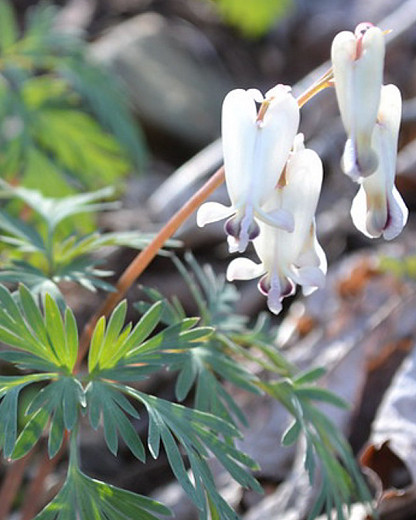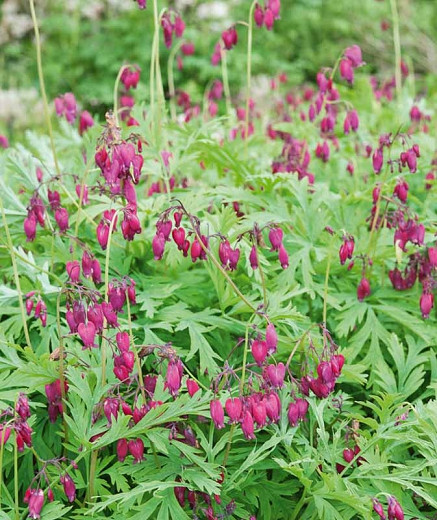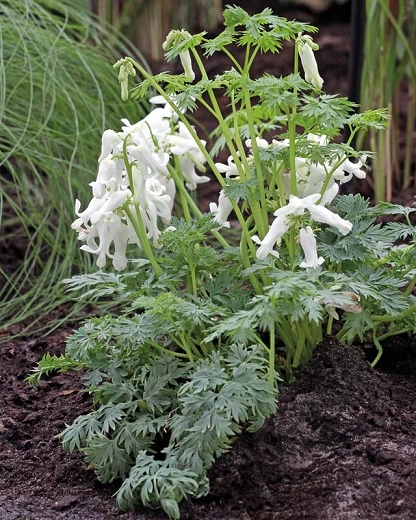Dicentra cucullaria (Dutchmans Breeches)
Native to eastern North America, Dicentra cucullaria (Dutchman’s Breeches) is a compact, bushy perennial forming a ravishing clump of feathery, blue-green, finely cut leaves. In mid to late spring, gracefully arching stems are studded with pantaloon-shaped white flowers adorned with yellow tips.
Native to eastern North America, Dicentra cucullaria (Dutchman's Breeches) is a compact, bushy perennial forming a ravishing clump of feathery, blue-green, finely cut leaves. In mid to late spring, gracefully arching stems are studded with pantaloon-shaped white flowers adorned with yellow tips. Borne in an elegant row along leafless stems, the blossoms dangle like porcelain earrings above the foliage. Dutchman's Breeches dies down soon after flowering. Dicentra cucullaria is a delightful early spring garden companion and a lovely addition to the woodland garden.
- Grows up to 6-12 in. tall and wide (15-30 cm). This shade perennial can spread to cover considerable areas.
- Thrives in part shade and is easily grown in fertile, humus-rich, moist, preferably neutral or slightly alkaline, well-drained soils. It is full shade tolerant but be aware that too much shade will result in few flowers.
- Great for banks and slopes, edging, underplanting shrubs, woodland gardens, coastal gardens, cottage gardens or as a groundcover.
- No serious pest or disease issues. Keep an eye out for slugs and snails. Rabbit resistant
- Propagate by division in early spring or after the leaves have died down. Propagate by seed – sow seed as soon as ripe or in spring.
- Native to eastern North America.
- All parts cause stomach ache if ingested.
Requirements
| Hardiness | 3 – 8 |
|---|---|
| Heat Zones | 1 – 8 |
| Plant Type | Perennials |
| Plant Family | Dicentra – Bleeding Hearts |
| Exposure | Partial Sun, Shade |
| Season of Interest | Spring (Mid,Late) |
| Height | 6" – 1' (15cm – 30cm) |
| Spread | 6" – 1' (15cm – 30cm) |
| Spacing | 12″ (30cm) |
| Water Needs | Average |
| Maintenance | Low |
| Soil Type | Chalk, Clay, Loam |
| Soil pH | Alkaline, Neutral |
| Soil Drainage | Moist but Well-Drained |
| Characteristics | Showy |
| Native Plants | United States, Midwest, Illinois, Indiana, Iowa, Kansas, Michigan, Minnesota, Missouri, Nebraska, North Dakota, Ohio, South Dakota, Wisconsin, Northeast, Connecticut, Maine, Massachusetts, Maryland, New Hampshire, New Jersey, New York, Pennsylvania, Rhode Island, Vermont, Pacific Northwest, Idaho, Oregon, Washington, Southeast, Alabama, Arkansas, Georgia, Kentucky, Mississippi, North Carolina, South Carolina, Tennessee, Virginia, West Virginia, Southwest, Oklahoma |
| Tolerance | Clay Soil, Rabbit |
| Garden Uses | Banks and Slopes, Beds and Borders, Edging, Ground Covers, Underplanting Roses and Shrubs |
| Garden Styles | City and Courtyard, Coastal Garden, Informal and Cottage |


